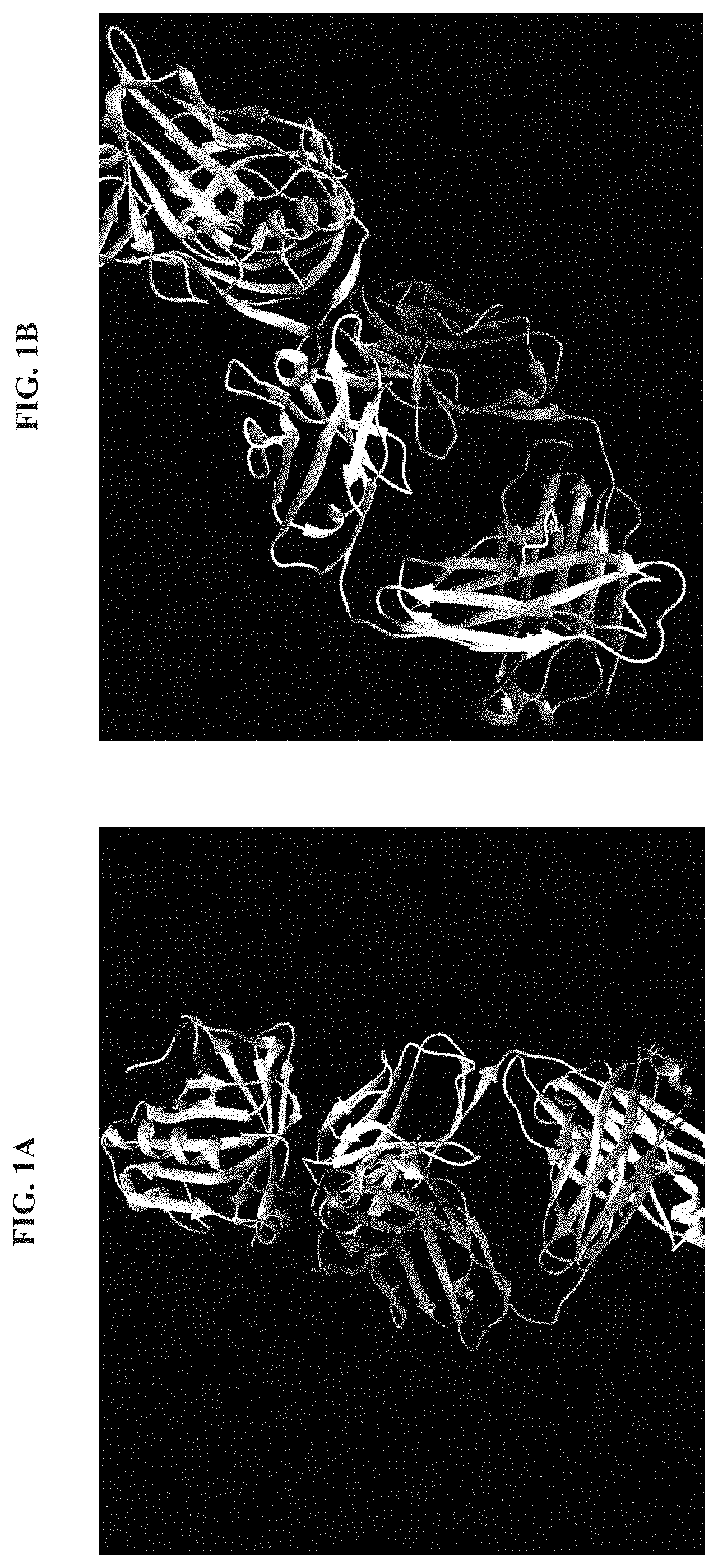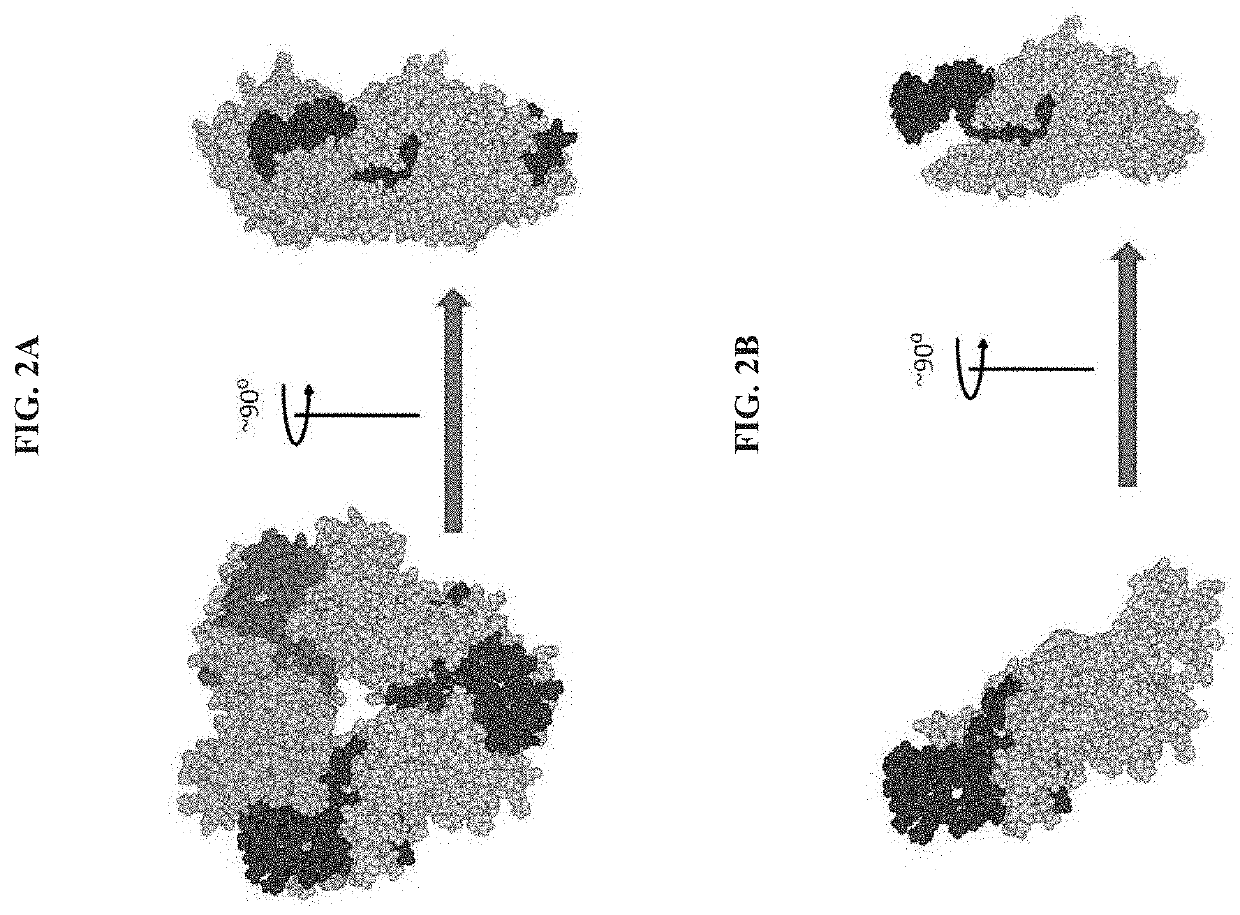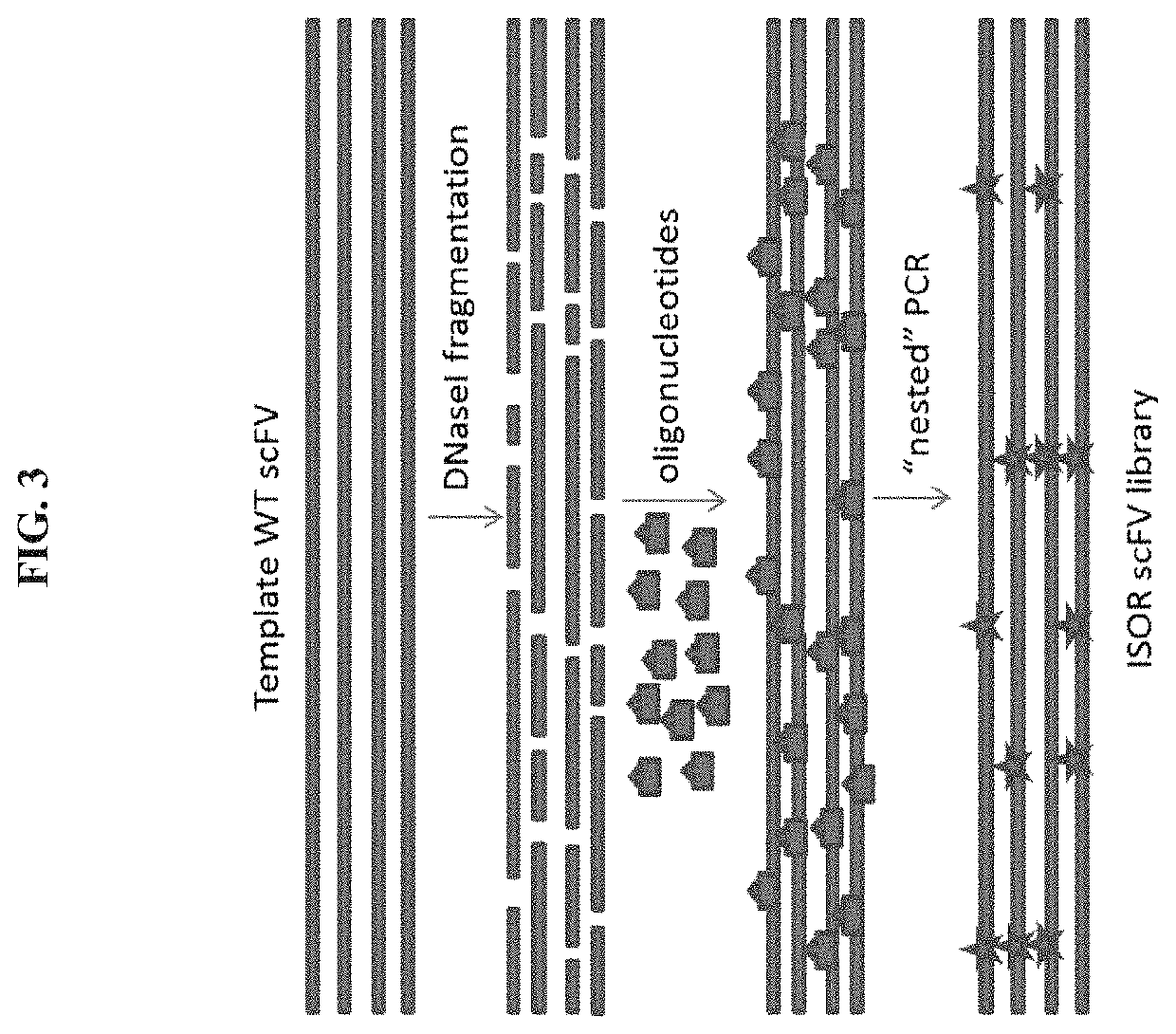Methods for identifying and de-epitoping allergenic polypeptides
a technology of allergenic polypeptides and peptides, which is applied in the field of methods for identifying and deepitoping allergenic polypeptides, can solve the problems of difficult or impossible for allergic individuals, individuals risk accidental exposure to trigger foods on a daily basis, and particularly problematic for allergic school-aged children. , to achieve the effect of eliminating serum reactivity, reducing serum reactivity, and reducing serum reactivity
- Summary
- Abstract
- Description
- Claims
- Application Information
AI Technical Summary
Benefits of technology
Problems solved by technology
Method used
Image
Examples
example 1
g IgE Antibody Epitopes
[0180]The following results provided a proof of concept that: 1) by using antibody sequence data, it was possible to identify residues that were crucial for the recognition of an allergen by the immune system; and 2) these predictions were done computationally, with high precision, based solely on the antibody sequences and a model of the allergen structure alone. The surprising results described herein (i.e., the capability for highly accurate allergen-epitope prediction) opens up new possibilities for identifying and combatting food allergens.
Methods
Epitope Prediction
[0181]To computationally predict the epitope for the indicated IgE antibodies, the antibody binding regions (ABRs) of the antibodies were identified using the Paratome web-based tool, as described previously (Kunik, V. et al. (2012) Nucleic Acids Res. 40(Web Server issue):W521-4; Kunik et al. (2012) PLoS Comput. Biol. 8(2):e1002388). This web-based tool was designed to identify the boundaries of...
example 2
for Identifying and De-Epitoping Allergens
Producing Labelled Allergen
[0188]First, purified native allergen (either commercially available allergen, e.g., Ara h2, or recombinant purified allergen) is biotinylated at lysine residues using a water-soluble biotin-XX sulfosuccinimidyl ester according to the manufacturer's protocol (Invitrogen). Next, fluorescent multimers are formed by means of the stepwise addition of Alexa Fluor 488 streptavidin (Invitrogen) to the biotinylated allergen until a 1:4 molar ratio is reached, thereby fluorescently labelling the allergen.
Identifying Allergen-Positive Circulating B Cells from Patients
[0189]The identification of allergen-positive circulating B cells from patients is carried out as previously described (Patil, S. U. et al. (2015) J. Allergy Clin. Immunol. 136(1): 125-134). Briefly, peripheral blood mononuclear cells (PBMCs) are isolated by density gradient centrifugation (Ficoll-Paque Plus; GE Healthcare) from peripheral blood harvested from a...
PUM
| Property | Measurement | Unit |
|---|---|---|
| molar ratio | aaaaa | aaaaa |
| affinity | aaaaa | aaaaa |
| SPR | aaaaa | aaaaa |
Abstract
Description
Claims
Application Information
 Login to View More
Login to View More - R&D
- Intellectual Property
- Life Sciences
- Materials
- Tech Scout
- Unparalleled Data Quality
- Higher Quality Content
- 60% Fewer Hallucinations
Browse by: Latest US Patents, China's latest patents, Technical Efficacy Thesaurus, Application Domain, Technology Topic, Popular Technical Reports.
© 2025 PatSnap. All rights reserved.Legal|Privacy policy|Modern Slavery Act Transparency Statement|Sitemap|About US| Contact US: help@patsnap.com



